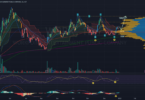Algo trading, or automated trading, is becoming popular in India. Brokers provide APIs (Application Program Interfaces) that help traders to build and execute quickly using programming scripts like Python.
By employing an API bridge, traders can seamlessly integrate their trading systems or strategies with their broker’s terminal. A crucial aspect of algo trading is the implementation of a well-structured rule-based trading system.
This system encompasses clearly defined rules governing all aspects of a trade, including entry criteria, position-sizing, maximum trade risk, trade management, and exit criteria. This article will guide you through the process of constructing a customized rule-based trading system tailored to your unique trading style and preferences.
Build Custom Trading Rules for Algo Trading
Building custom trading rules for algo trading involves a number of steps:
1. Define the Objective of Your Strategy
Defining the objective of your trading strategy means determining what you want to achieve with your trades, such as generating profits or minimizing losses.
This helps guide your decision-making process and ensures that you have a clear understanding of what you are trying to accomplish.
2. Choose the Markets to trade
Choosing the markets to trade in involves determining which financial markets you want to trade in, such as equities, forex, or commodities. Each market has its own unique characteristics and requires different strategies.
Before choosing markets to trade, you should research and grasp their characteristics, risks and benefits. By selecting the correct markets for your trading technique, you may improve your results.
3. Identify the Asset and Entry-Exit of Your Trade
Choosing an asset to trade—stocks, currencies, commodities, or indices—involves selecting a financial instrument.
Once you have chosen your asset, you can then determine your entry and exit points based on your trading strategy.
Entry points are typically based on technical indicators or other criteria, such as price patterns or news events. In contrast, exit points are often determined by setting stop-loss and take-profit levels.
To maximize earnings and minimize losses, monitor your trades and make modifications as appropriate.
4. Set Stop Loss and Profit Level
Setting stop loss and take profit levels is a crucial step in building custom trading rules for algo trading. These levels help limit losses and maximize profits and should be determined based on the specific market and trading strategy being employed.
5. Backtest the Trading Strategy and Implement
Backtesting your trading strategy involves testing it using historical market data to see how it would have performed. This helps you identify potential flaws in your strategy and make any necessary adjustments.
Once your approach performs well, apply it on an algorithmic trading platform and watch it in real-time. It’s essential to regularly monitor and adjust your strategy as market conditions change to ensure continued success.
Pros and Cons of Algo Trading
Algo trading can be a profitable venture, but building custom trading rules is the right approach depends on several factors. Here are some pros and cons to consider.
Pros:
- Tailored to your specific trading style and objectives
- Offers flexibility to adapt to changing market conditions
- Can be backtested to determine historical performance
- Provides a greater level of control over trades
- Can potentially generate higher returns than standard trading strategies
Cons:
- Requires technical knowledge of trading and programming
- Time-consuming to develop and test
- This may result in over-optimization or curve-fitting to historical data
- Not guaranteed to be profitable in future market conditions
- Risk of human error in designing the rules
Take a course on options
Ready to take your algo trading to the next level? Take Upsurge.club’s advanced algo trading course on “How to Build Custom Trading Rules for Algo Trading” and learn how to define objectives, choose indicators, set entry and exit rules, and implement and backtest your trading strategy.
The course is best amongst other algo trading courses online. Our course is designed to help you gain the technical knowledge and market expertise needed to build successful trading strategies.
Wrapping Up
Building custom trading rules for algo trading can be a powerful tool for generating profits and minimizing losses. However, it requires a combination of technical knowledge, market expertise, and experience, which you can get from an advanced algo trading course.






